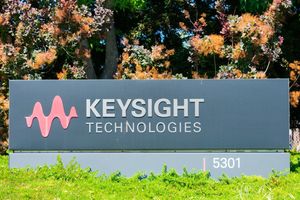
As of November 2025, the global financial landscape is marked by a profound divergence in stock market performance, largely orchestrated by the accelerating influence of Artificial Intelligence (AI) deals and investments. While a select cohort of tech giants and their respective markets are soaring to unprecedented heights, propelled by an 'AI gold rush,' a broader segment of the market and other regions are struggling to keep pace, raising questions about market breadth and long-term sustainability. This period is characterized by an intense concentration of capital and power among a few key players, fiercely competing for dominance in the evolving AI-driven computing landscape.
The AI Investment Frenzy and Its Immediate Repercussions
The immediate implications of this AI-driven phenomenon are stark. High-profile, multi-billion dollar strategic collaborations and acquisitions have become the norm, with tech behemoths vying for crucial AI infrastructure and talent. A prime example is Amazon's (NASDAQ: AMZN) substantial $38 billion, seven-year deal with OpenAI, leveraging Amazon Web Services (AWS) to provide extensive access to Nvidia's (NASDAQ: NVDA) Graphics Processing Units (GPUs). This move has significantly bolstered Amazon's stock and cemented its position as a major AI player, with AWS growth accelerating to 20% in Q3 2025. Similarly, Nvidia itself secured a $100 billion investment agreement with OpenAI, which in turn committed to purchasing Nvidia's chips. Oracle (NYSE: ORCL) also entered the fray with a five-year, $300 billion cloud-computing contract with OpenAI, agreeing to invest tens of billions in Nvidia chips, causing Oracle's stock to surge by an astonishing 43% in a single day.
Other key players are equally aggressive. Microsoft (NASDAQ: MSFT) has made significant strategic moves, including a $9.5 billion acquisition of Synapse AI to enhance its Azure cloud services and increasing its investment in OpenAI to approximately $14 billion since 2019. Google (NASDAQ: GOOGL) has solidified its position by committing an additional $1 billion to Anthropic earlier this year, building on an initial $2 billion commitment. These mega-deals and partnerships are not just about capital; they are strategic maneuvers to prevent supply-side bottlenecks and ensure access to the computational horsepower essential for future AI demand. The 'Magnificent Seven' tech companies are projected to spend an unprecedented $405 billion in capital expenditures this year, predominantly on AI infrastructure.
Initial market reactions have been overwhelmingly positive for the direct beneficiaries. Investor optimism has injected immense capital into the technology sector, driving significant surges in the stock prices of the involved companies, particularly within the 'Magnificent Seven.' Companies like CoreWeave, with major partnerships with OpenAI and Meta Platforms (NASDAQ: META), have seen their market capitalization surge to nearly $67 billion since its IPO in March, with shares spiking 221% over the last six months. However, beneath this surface of soaring valuations, a growing skepticism is emerging. Forrester predicts a cooling of the AI boom, with approximately 25% of enterprise AI investments planned for next year deferred until 2027, citing a 'disconnect between vendor promises and actual business results.' An MIT study found that 95% of 300 surveyed AI developments had not turned a profit despite significant spending, hinting at potential overinvestment and shrinking returns.
Winners and Losers: The Shifting Sands of Corporate Fortunes
The current AI-driven market divergence is creating clear winners and losers across various sectors, profoundly reshaping business models, revenues, and market positions. At the forefront of the winners' circle is Nvidia (NASDAQ: NVDA), which remains the undisputed 'gold standard' for AI investing. Its Graphics Processing Units (GPUs) are the essential physical infrastructure for AI training and inference, ensuring continued demand from major hyperscalers. Nvidia is further solidifying its position by integrating CPUs into its accelerator boards, with analysts projecting continued revenue growth exceeding 50% annually through at least 2026.
Close behind, Microsoft (NASDAQ: MSFT) is leveraging aggressive AI integration across its vast product ecosystem, branded as 'Copilots.' These AI-powered tools, embedded in Office, Dynamics, GitHub, and Windows, are translating into staggering financial success, with its Intelligent Cloud division (including Azure) seeing a 40% year-over-year revenue increase, largely driven by AI services. Amazon (NASDAQ: AMZN), through its Amazon Web Services (AWS), is also thriving, reporting a 20% year-over-year revenue increase to $33 billion in Q3 2025, fueled by surging demand for AI computing power and strategic investments in custom AI chips like Trainium. Alphabet (NASDAQ: GOOGL) is similarly benefiting from massive demand for AI computing power within its Google Cloud division and is adapting its core Search business with 'AI search overviews.'
Other significant beneficiaries include Adobe (NASDAQ: ADBE), which is strategically integrating its Firefly AI and competing models into its Creative Cloud applications, enhancing creative workflows and boosting productivity. ServiceNow (NYSE: NOW) is poised for robust growth, with revenue projected to rise by 20% year-on-year to $13.2 billion, primarily due to accelerated AI adoption and surging enterprise demand for its AI-powered workflow automation platform. Advanced Micro Devices (NASDAQ: AMD) is emerging as a significant contender in the AI chip market, securing major deals and showing strong data center revenue growth. Broadcom (NASDAQ: AVGO) is also reporting strong results, with AI-related revenues projected to reach over $20 billion in 2025, representing more than 40% of its total sales, thanks to its wide economic moat and deep customer integration.
Conversely, several companies are facing substantial headwinds. Intel (NASDAQ: INTC) has 'badly lagged behind' competitors in the production of crucial AI accelerators, reporting a net loss of $18.76 billion in fiscal year 2024 and continued losses into Q1 2025. The company's gross profit margin has sharply contracted, reflecting heightened cost pressures and competitive pricing. While Intel is strategically shifting its focus towards edge AI, agentic AI, and AI-enabled consumer devices, its success in these new areas remains to be seen. Traditional/legacy automotive chipmakers are also experiencing eroding margins due to stagnant demand, struggling to compete with the rapid advancements in AI-driven semiconductor technology. Furthermore, traditional media and content creation companies face significant disruption from the surge in AI-generated content, risking market share loss if they fail to integrate AI tools for automated content creation and personalization.
Wider Significance: A New Era of Economic and Regulatory Shifts
The ongoing global stock market divergence, fueled by the AI gold rush, represents a critical inflection point, not merely a fleeting market trend. It fits into broader industry trends marked by an unprecedented AI investment boom, projected to exceed $400 billion in 2025—nearly double the expenditures of the previous year. The global AI market itself is estimated at $757.58 billion in 2025, with expectations to skyrocket to approximately $3.68 trillion by 2034. This immense capital is primarily flowing into AI infrastructure, encompassing semiconductors, cloud computing, and Graphics Processing Units (GPUs), fundamentally reshaping the technological bedrock.
A significant ripple effect is the growing concentration of AI capabilities among a few dominant tech giants. Companies like Nvidia (NASDAQ: NVDA), Microsoft (NASDAQ: MSFT) with Azure OpenAI, Google (NASDAQ: GOOGL) with Vertex AI, and Amazon (NASDAQ: AMZN) with AWS Bedrock are not only developing foundational AI models but also providing the essential 'AI-as-a-service' infrastructure globally. Nvidia, in particular, commands an overwhelming 80-95% of the AI accelerator market, strategically controlling both supply and demand in the AI infrastructure buildout. This dominance raises potential antitrust concerns, as regulators globally are scrutinizing these developments to prevent monopolistic practices and ensure fair competition.
Regulatory bodies worldwide are scrambling to establish frameworks for this rapidly evolving technology. In the United States, a fragmented landscape sees a patchwork of state-level laws, like Colorado's AI Act focusing on high-risk systems and California's AI Transparency Act (effective January 2026), filling the federal vacuum. The European Union has taken a leading role with its comprehensive AI Act, adopted in June 2024, with key provisions on unacceptable risks already applicable since February 2025. Meanwhile, China continues to implement its 'Interim Measures for the Management of Generative AI Services' and introduced new 'Labelling Rules' for AI-generated content in September 2025, emphasizing national security and self-reliance in critical AI infrastructure, reflecting escalating geopolitical tensions over AI as a strategic asset.
Historically, this period draws parallels to the Dot-Com Bubble of the late 1990s, with rapidly rising valuations and speculative investments in technology stocks. However, a key distinction is that today's leading AI companies generally exhibit established profitability and robust cash reserves, unlike many nascent dot-com startups. Other comparisons include the Railroad Boom of the 19th century and the Telecom Bust of the early 2000s, both characterized by massive infrastructure buildouts that sometimes led to overinvestment and poor returns for the builders themselves. This historical context serves as a cautionary tale, suggesting that while AI will be transformative, it doesn't guarantee commensurate returns for all companies building its foundation, especially those with aggressive capital expenditure forecasts without clear paths to immediate profitability.
What Comes Next: Navigating a Dynamic Future
Looking ahead, the global stock market divergence and the pervasive impact of AI deals are set to drive both short-term fluctuations and long-term transformations, necessitating strategic adaptations from investors and businesses alike. In the short term (late 2025 - 2026), the 'world of divergence' is expected to persist, with countries like South Korea, Mexico, and China potentially continuing their outperformance due to factors such as unwinding semiconductor export tariffs, booming AI infrastructure demand, and proximity to US supply chains. Diverging central bank policies, with the US Federal Reserve maintaining a hawkish stance even after a rate cut in October 2025, will continue to create volatility in foreign exchange markets and a fragmented economic outlook. J.P. Morgan Research forecasts robust global growth in 2025, excluding a sharp slowdown in China, but expects continued dispersion across stocks, styles, sectors, and countries, with geopolitical risks and trade wars remaining persistent.
The immediate future of AI deals will see a shift into a 'discrimination phase.' While global AI funding reached an astounding $73.1 billion in Q1 2025, investors are increasingly demanding proof that massive AI spending will generate actual returns, rather than simply rewarding hype. Meta Platforms' (NASDAQ: META) stock plunge in October 2025, despite aggressive capital expenditure increases for AI, serves as a clear signal of this shift, contrasting with Alphabet's (NASDAQ: GOOGL) surge due to proven monetization from its cloud business. Mergers and acquisitions (M&A) will continue to be significantly influenced by AI, with companies actively acquiring AI technologies and talent, but antitrust scrutiny, particularly on AI M&A involving major tech firms, is expected to intensify.
Longer term (2027+), AI is expected to be a foundational amplifier of other technology trends, driving innovation across various sectors. The global generative AI market alone is projected to reach US$699.50 billion by 2032. However, concerns about a potential stock market bubble bursting due to AI overvaluation remain, with some experts predicting that long-term investment returns from equities may be poorer than in the past decade, and bonds potentially outperforming stocks. A highly speculative, but discussed, long-term outcome is the potential for superintelligent AI systems to fundamentally transform the stock market itself by 2027-2028, potentially disrupting traditional price discovery and making existing investment strategies obsolete, leading to a 'meta-market' trading prediction models and their accuracy.
For investors, this necessitates a focus on country-level differentiation and a shift towards AI investment scrutiny, favoring ventures with demonstrated monetization. Diversification beyond traditional assets and a long-term horizon prepared for potentially lower equity returns are crucial. Companies must undertake AI-centric transformation, focusing on scaling AI solutions, building trust, and demonstrating clear monetization from AI investments. Strategic M&A and partnerships will remain vital, alongside a focus on responsible innovation and workforce adaptation. Policymakers, meanwhile, will need to refine AI regulation, address competition and antitrust concerns, and support massive infrastructure investment for AI, including new power sources.
Conclusion: Navigating the AI-Driven Market Landscape
As November 2025 draws to a close, the global stock markets stand at a critical crossroads, defined by a profound divergence fueled by the relentless surge in Artificial Intelligence (AI) investments. The key takeaway is the undeniable outperformance of U.S. equities, particularly the technology-heavy Nasdaq Composite and S&P 500, driven by robust optimism surrounding AI. However, this growth is largely concentrated in a handful of mega-cap technology firms, leading to a significant divergence where the equal-weighted S&P 500 has underperformed, raising concerns about market breadth and potential overvaluation.
Moving forward, AI will undoubtedly remain a primary market driver, underpinned by ongoing capital investment and the demand for increased productivity. Optimistic forecasts, such as Evercore ISI's projection of the S&P 500 hitting 7,750 by year-end 2026, underscore the belief in AI's sustained momentum. Yet, the market is entering a 'discrimination phase,' demanding tangible returns and clear monetization strategies from massive AI expenditures. Experts, including JPMorgan Chase CEO Jamie Dimon, warn of a 'serious market correction' within the next two years, drawing parallels to the dot-com bubble, with Capital Economics specifically forecasting an AI-fueled stock market bubble bursting in 2026.
The lasting impact of this period will be a fundamental reshaping of the technology landscape, financial services, and the broader global economy. AI promises enhanced efficiency, personalized experiences, and new paradigms for risk management. However, this transformative power also brings the significant consequence of wealth and power concentration within a select group of tech giants, initiating a fierce battle for dominance in the next era of computing. The challenge lies in distinguishing between genuine, long-term economic benefits of AI and the potential for speculative excess in asset valuations. The long-term outperformance of the U.S. stock market may eventually wane if other global economies effectively integrate AI and broader market participation improves.
Investors should remain vigilant and adopt a highly selective approach in the coming months. Key areas to watch include AI monetization and ROI, closely scrutinizing companies' abilities to demonstrate tangible returns. Market breadth expansion will be crucial to observe whether leadership broadens beyond the current tech giants. Vigilance over economic indicators like inflation, interest rates, and employment figures, alongside geopolitical developments such as the stability of the US-China trade truce, is paramount. The evolving AI regulatory environment, with its focus on transparency and risk frameworks, will also influence the operational landscape. Finally, upcoming earnings reports from key tech and AI players will provide crucial insights into industry trends and individual company performance, amidst growing concerns over resource constraints for the immense AI infrastructure build-out.
This content is intended for informational purposes only and is not financial advice





